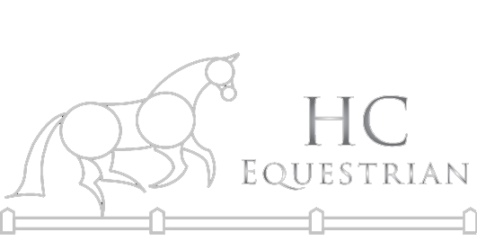When thinking about improving balance, riders typically imagine their horses traveling with an”uphill”balance. The outline of the horse will appear as if he is traveling uphill when he lowers his haunches and allows his withers to raise higher than his croup. The result is a horse who bears more weight on his hind legs than his front legs. This desired longitudinal balance is a great thing to strive for, but it is not the only dimension of balance necessary for prime performance.
A horse must also be balanced laterally. A horse who is balanced laterally will bear equal weight between his left and right feet. Many horses are resistant because they lack the secure feeling of being laterally balanced. Without lateral balance, the horse will feel vulnerable to falling. As a result, he will try to preserve himself by:
- going too slow… Imagine you are scared of falling on ice; you will walk slowly to maintain your balance.
- rushing faster… Imagine you’ve tripped while walking down the sidewalk; you will run a few strides to catch yourself.
- bracing against the rider’s aids… Imagine you’ve stepped in some mud, to avoid falling you brace yourself by grabbing the person next to you
To solve the most common lateral balance issues, you must first learn to abduct your horse’s inside front leg at will. I teach this starting with a haunch turn.
A haunch turn is when the front legs revolve around a stationary hind end. Begin by having your horse step back a step and then immediately cue for the forehand to move around. To turn left, you would:
- Weight your left stirrup
- Position your right leg slightly back to prevent the haunches from slipping right
- Open your left rein and add a little pressure to your left rein to get your horse to abduct his left front leg.
- Remember to sit deeply throughout
 Initiating the haunch turn with left flexion, an opening left rein, and weight in the left stirrup.
Initiating the haunch turn with left flexion, an opening left rein, and weight in the left stirrup.
 Showing good abduction of the left front leg, this is the motion I care most about right now.
Showing good abduction of the left front leg, this is the motion I care most about right now.
 I was happy with the previous step, so I released the pressure and pasted Blue. He hasn’t stopped the maneuver yet and is showing good adduction of the right front.
I was happy with the previous step, so I released the pressure and pasted Blue. He hasn’t stopped the maneuver yet and is showing good adduction of the right front.
You don’t need to do a 360 degree turn right off the bat. 90 degrees is sufficient for your first attempts, then you can add 90 more degrees at a time. Don’t do too many of these turns in a row, especially if this is the first time your horse has done these turns. He may get sore or frustrated.
Now that we’ve taught the horse the cue to abduct his inside front leg at the halt, we can take this cue into motion to help the horse achieve straightness and better balance in motion.
 Blue’s left front leg is striking the ground under the center of his chest. This is a common effect of being crooked/having too much bend. The horse is not laterally balanced if he is doing this. He’s carrying the majority of his weight on the left front leg. I’m beginning to use an opening inside rein to encourage him to land with his left front leg more to his left.
Blue’s left front leg is striking the ground under the center of his chest. This is a common effect of being crooked/having too much bend. The horse is not laterally balanced if he is doing this. He’s carrying the majority of his weight on the left front leg. I’m beginning to use an opening inside rein to encourage him to land with his left front leg more to his left.
 Blue has responded well to the opening rein. In this next step placed his left front leg more to the left. This has both straightened him, and given him better lateral balance, his weight is much more equal over his front legs.
Blue has responded well to the opening rein. In this next step placed his left front leg more to the left. This has both straightened him, and given him better lateral balance, his weight is much more equal over his front legs.
As horses gain lateral balance, they become more confident and less resistant. The result is a horse who is happier, more fun to ride, and in a better position to advance in his training.
Ali Kermeen loves horses. She loves all kinds of horses, and doing all sorts of different stuff with them. Dressage, eventing, gymkhana, hunters, trail, cowboy dressage, jumpers, reining, and working equitation are all really fun! Ali is currently training two retired race horses to compete in the Thoroughbred Makeover in Kentucky.

